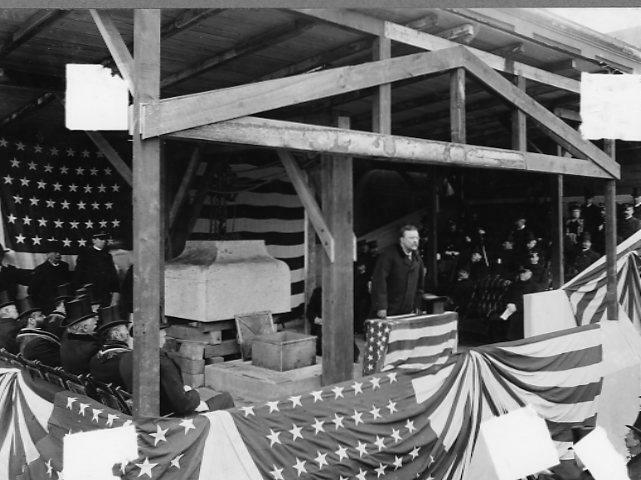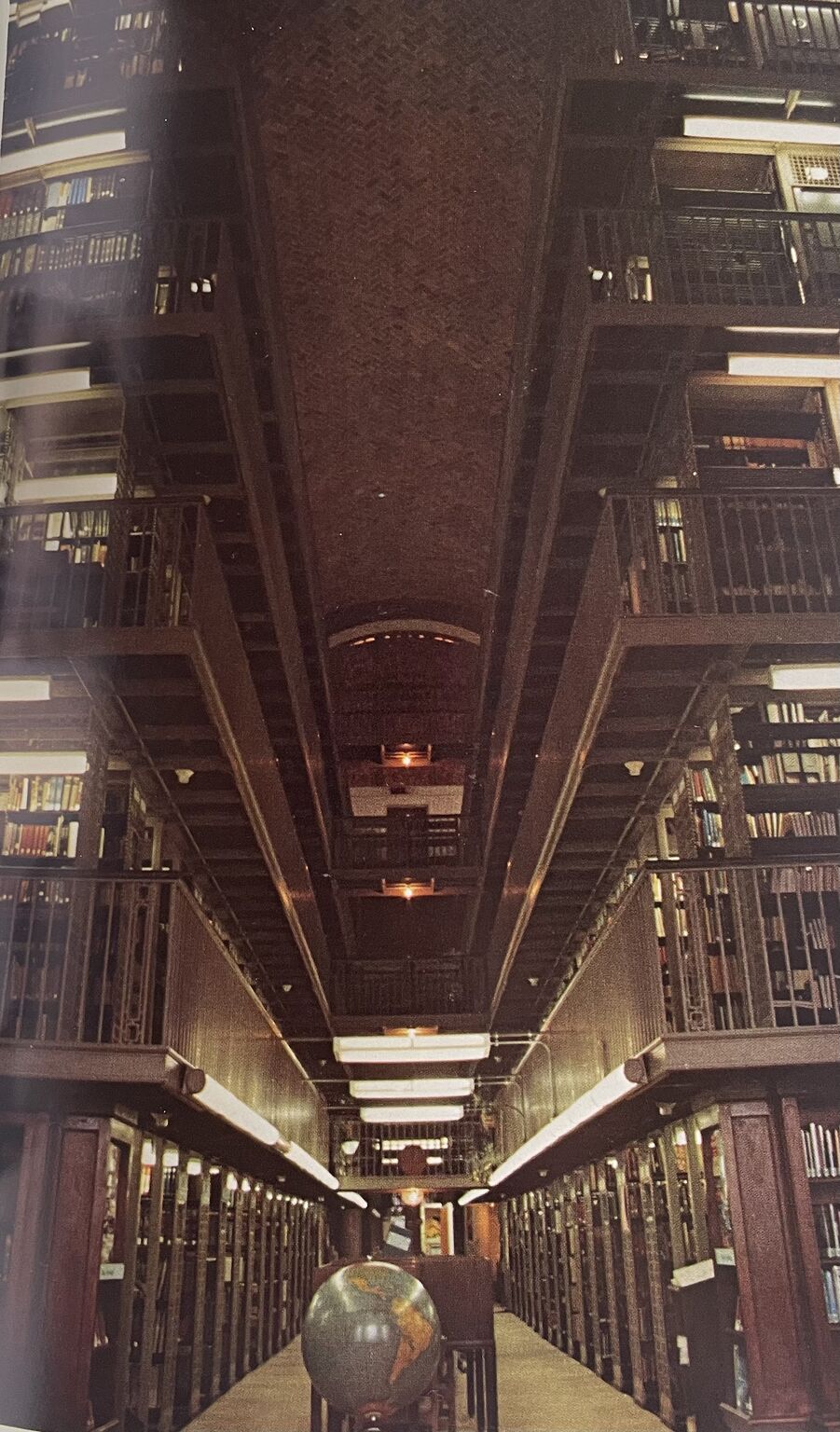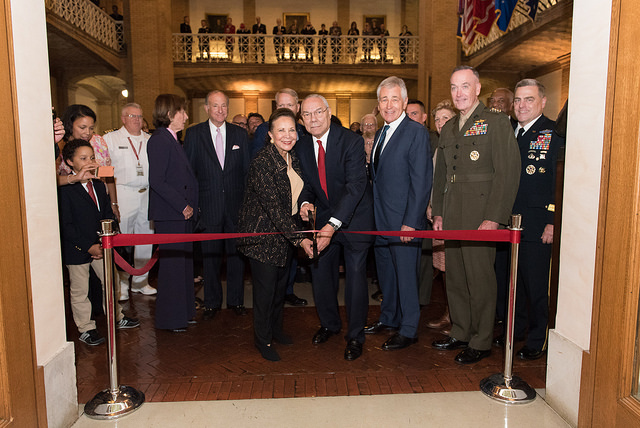History of the National War College
(1945 – Present)
In October 1945, Admiral Harry W. Hill was appointed as the first Commandant of the National War College and tasked with establishing a College for the postwar joint education of the armed forces. According to Lieutenant General Leonard T. Gerow, President of the Board which recommended its formation, “The College is concerned with grand strategy and the utilization of resources necessary to implement that strategy...Its graduates will exercise a great influence on the formulation of national and foreign policy in both peace and war...”This theme was underscored with the participation of the State Department and, eventually, other government agency representatives into the faculty and student body.
The National War College mission is to prepare future leaders of the Armed Forces, State Department, and other civilian agencies for high-level policy, command, and staff responsibilities by conducting a senior-level course of study in national security strategy and national security policy. In furtherance of this mission, the College curriculum focuses on grand strategy – the integration of all elements of national power – as well as the theory and practice of war, fundamentals of strategic thinking for national security matters, the global security arena, the inter-agency decision-making process, contemporary military strategy, and joint and combined warfare. A fundamental strength of the College is its joint environment and approach. Students and faculty are drawn from all armed services and from civilian departments and agencies concerned with national security policies. The College program stresses “jointness” in military planning and operations and the interrelationship of domestic, foreign, and defense policies.
George F. Kennan served as the State Department's first senior representative to the National War College from September 1946 to May 1947. During his time at the National War College, Mr. Kennan produced a steady stream of lectures and articles, which provided much of the intellectual foundation for post-World War II foreign Policy of the United States, including the Truman Doctrine. One of the articles written during this time was, The Sources of Soviet Affairs, published under his pan name "X" in the July 1947 issue of Foreign Affairs. This article became known as the X Article; it introduced the term Containment to widespread use and advocated the strategic use of that concept against the (then) Soviet Union. In 1950, the term would be enshrined in NSC 68 as the strategy pursued by the United States throughout the Cold War.
For his numerous contributions, the National War College honored Mr. Kennan by establishing the George F. Kennan Chair in National Security Strategy in September 1993 and created the George F. Kennan Lecture Series in the Fall of 2005. Additionally, his office in Roosevelt Hall has been dedicated as The George F. Kennan Room and continues to be the office for the State Department's senior representative at the National War College.
The National War College has occupied Roosevelt Hall since the founding of the College, except for 1998-99 during the Hall’s renovation. The College was incorporated into the National Defense University in 1976 when the latter was created as the country’s pre-eminent joint professional military education center. In commemoration of the 70th anniversary, on September 29, 2016, the College dedicated the west wing of Roosevelt Hall as the “General Colin L. Powell” Wing. Additionally, in April of 2016, the College reunited all living former Commandants and Distinguished Alumni.
History of Roosevelt Hall 
(1903 – Present)
Roosevelt Hall was designed by McKim, Mead & White between 1903-1907 at the historic Washington Arsenal (which became Fort Lesley J. McNair in 1948 and is currently the third-oldest Army post still active) and construction commenced on February 21,1903 and was completed in 1907. Roosevelt Hall housed the Army War College (AWC) from 1907 to 1946 when the AWC moved to Fort Leavenworth, Kansas, and then a year later to Carlisle Barracks, Pennsylvania. Since 1946, it has housed the National War College
The design of the building moves out from the central rotunda with two wings extending to the east and west. These wings are 116 feet long and lighted at each end by arched windows. The library was established in the West Wing and holds unobstructed views of the three-story west wall, with cast iron shelving established on the first floor. Over the years, the collection grew, and the stacks increased in height to five levels accessed by nearly vertical cast iron stairs that reached the 3rd story floor of the building. In the summer of 1991, the libraries of the Industrial College of the Armed Forces and the National War College were consolidated into the National Defense University Library in Marshall Hall, with the cast iron stacks remained in the West Wing for additional library storage space from 1991 until 1998.
of the building moves out from the central rotunda with two wings extending to the east and west. These wings are 116 feet long and lighted at each end by arched windows. The library was established in the West Wing and holds unobstructed views of the three-story west wall, with cast iron shelving established on the first floor. Over the years, the collection grew, and the stacks increased in height to five levels accessed by nearly vertical cast iron stairs that reached the 3rd story floor of the building. In the summer of 1991, the libraries of the Industrial College of the Armed Forces and the National War College were consolidated into the National Defense University Library in Marshall Hall, with the cast iron stacks remained in the West Wing for additional library storage space from 1991 until 1998.
On November 28, 1972, The National War College (Roosevelt Hall) was designated a National Historic Landmark and listed on the National Registry of Historic Places.
General Colin L. Powell Wing
(2016)
The 1998 reconstruction of the building resulted in a new look for the West Wing. Four offices w ere established for the four military service chairs, and the original cast iron stacks were used to accent furniture that modeled the wing as a grand study wing and event hall. In 2016, the West Wing was dedicated to General Colin L. Powell and renamed the General Colin L. Powell Wing. It displays awards and personal effects from the General Powell's illustrious career in both the military and federal governments.
ere established for the four military service chairs, and the original cast iron stacks were used to accent furniture that modeled the wing as a grand study wing and event hall. In 2016, the West Wing was dedicated to General Colin L. Powell and renamed the General Colin L. Powell Wing. It displays awards and personal effects from the General Powell's illustrious career in both the military and federal governments.